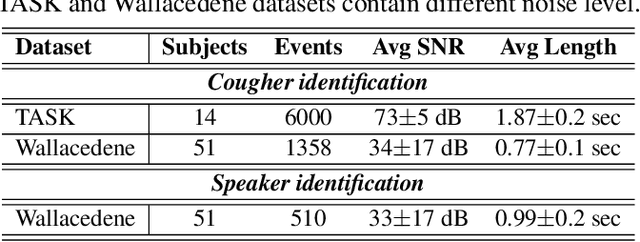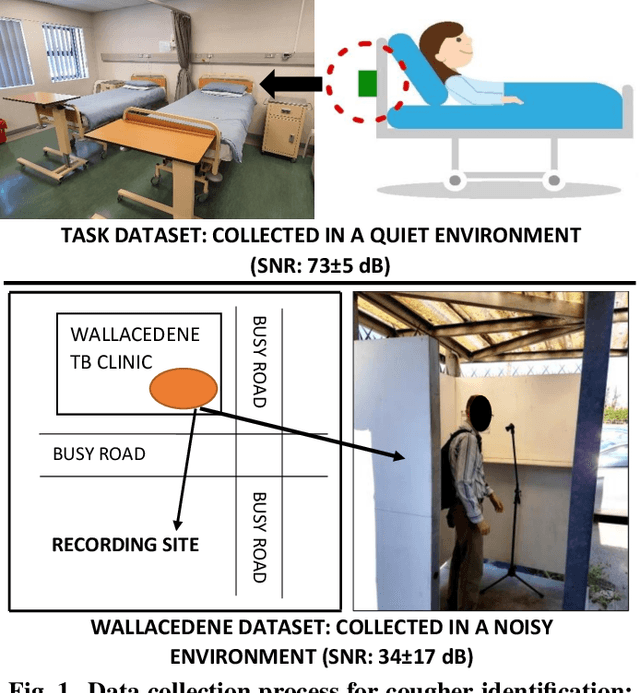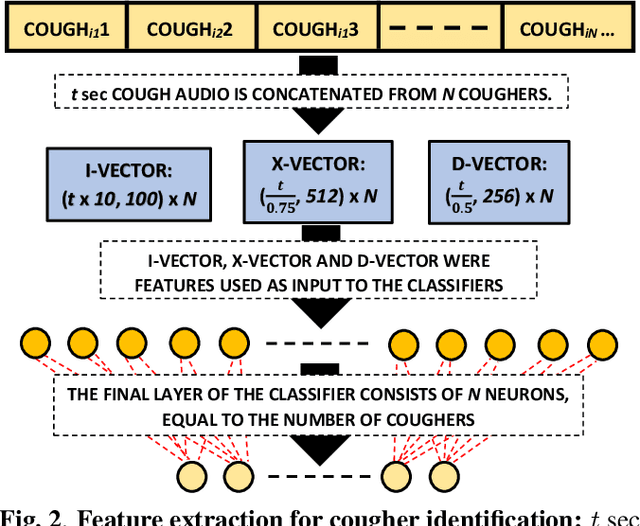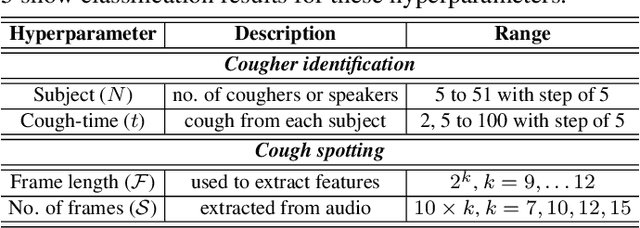Wake-Cough: cough spotting and cougher identification for personalised long-term cough monitoring
Paper and Code
Oct 07, 2021



We present 'wake-cough', an application of wake-word spotting to coughs using Resnet50 and identifying coughers using i-vectors, for the purpose of a long-term, personalised cough monitoring system. Coughs, recorded in a quiet (73$\pm$5 dB) and noisy (34$\pm$17 dB) environment, were used to extract i-vectors, x-vectors and d-vectors, used as features to the classifiers. The system achieves 90.02\% accuracy from an MLP to discriminate 51 coughers using 2-sec long cough segments in the noisy environment. When discriminating between 5 and 14 coughers using longer (100 sec) segments in the quiet environment, this accuracy rises to 99.78\% and 98.39\% respectively. Unlike speech, i-vectors outperform x-vectors and d-vectors in identifying coughers. These coughs were added as an extra class in the Google Speech Commands dataset and features were extracted by preserving the end-to-end time-domain information in an event. The highest accuracy of 88.58\% is achieved in spotting coughs among 35 other trigger phrases using a Resnet50. Wake-cough represents a personalised, non-intrusive, cough monitoring system, which is power efficient as using wake-word detection method can keep a smartphone-based monitoring device mostly dormant. This makes wake-cough extremely attractive in multi-bed ward environments to monitor patient's long-term recovery from lung ailments such as tuberculosis and COVID-19.
 Add to Chrome
Add to Chrome Add to Firefox
Add to Firefox Add to Edge
Add to Edge